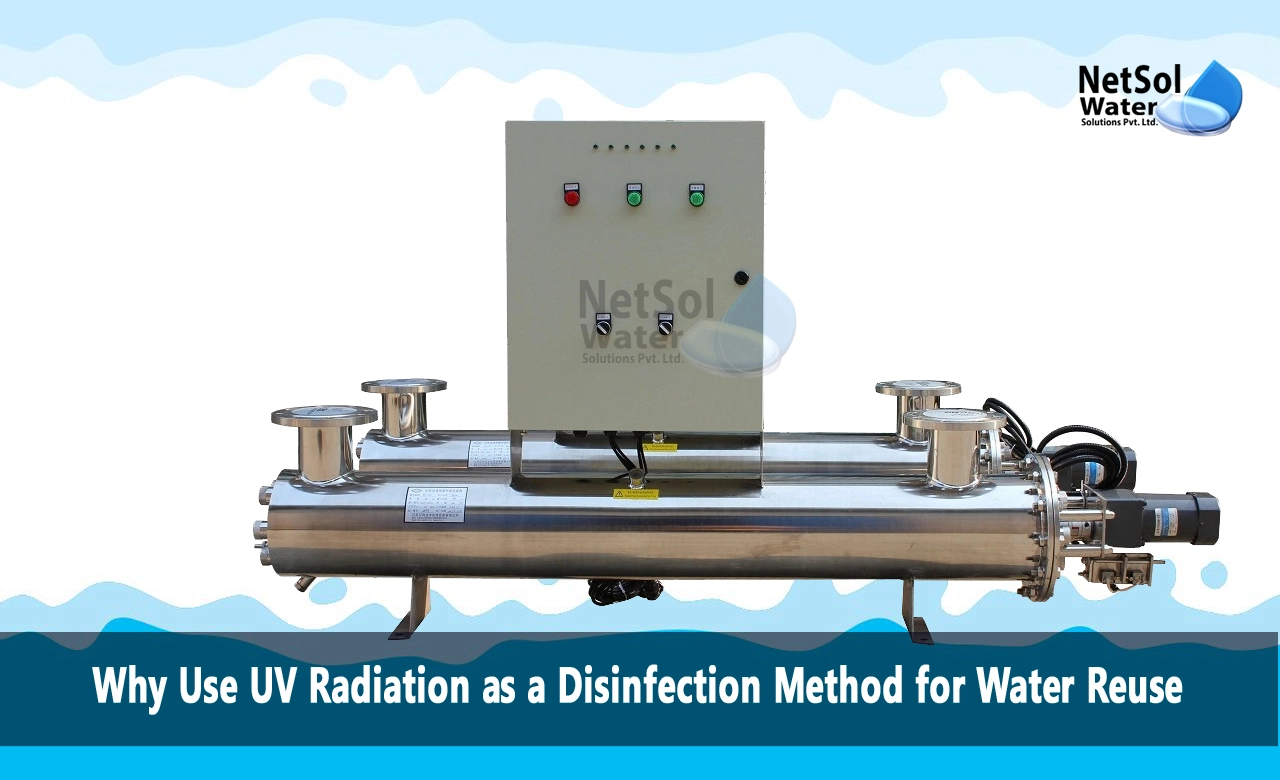Why Use UV Radiation as a Disinfection Method for Water Reuse?
As water scarcity increases globally, water reuse is becoming an important component of sustainable water management. Treatment technologies are necessary to safely reuse contaminated wastewater flows for applications like agricultural and landscape irrigation, industrial processes, and augmentation of drinking water supplies. Ultraviolet (UV) radiation is an attractive disinfection option for water reuse because of its efficacy at inactivating microorganisms without producing harmful by products.
UV Disinfection Mechanisms
UV light between 200-300 nm wavelength damages microorganisms by inducing photochemical reactions that disrupt DNA bonds. The UV dose determines the level of inactivation. Key variables are the UV intensity, exposure time, and water transmittance. Higher UV intensities supply more photons per time interval. Longer exposure ensures sufficient dosage as water flows through the reactor. UV transmittance depends on factors like suspended solids, turbidity, and dissolved organics that can shield microbes from irradiation. Target organisms include bacteria, viruses, protozoa and helminths. UV is highly effective against vegetative bacteria via direct DNA damage. Viruses are inactivated indirectly via effects on host cells during replication. Spore-forming bacteria require higher doses due to cellular protective pigments.
Water Quality Considerations
Several water quality parameters influence UV disinfection effectiveness:
1- Suspended Solids and Turbidity: Particles can shade microorganisms from UV exposure. Turbidity above 5 NTU can significantly reduce disinfection. Particulate removal is essential.
2- Dissolved Organics: Similar to turbidity, organics absorb UV light and decrease disinfection efficiency. TOC above 5 mg/L impacts UV transmittance.
3- Iron and Manganese: These can deposit on system surfaces as oxides, reducing transmittance. Regular cleaning is needed to mitigate accumulations.
4- Hardness: Scale deposition from calcium and magnesium decreases UV transmittance over time. Chemical or physical scale mitigation is necessary.
Validating UV Reuse Safety
For water reuse, UV systems must deliver sufficient disinfection to meet health-based reuse criteria while accounting for impacts of water quality variability. This requires bioanalytical validation testing to demonstrate adequate disinfection of representative microbial challenges. Dose-monitoring strategies include collimated beam testing, bioassays with test microbes, and monitoring with biodosimetry surrogates. These verify that four log virus inactivation and two log Giardia inactivation benchmarks are achieved to reuse treated water safely.
Advanced Oxidation with UV
UV can also be combined with oxidants like hydrogen peroxide in advanced oxidation processes (AOPs). The UV photolysis of peroxide generates hydroxyl radicals that provide chemical oxidation and disinfection. AOPs treat a broader range of organic contaminants and emerging micro pollutants in reclaimed water. UV/peroxide can effectively remove trace organics like pharmaceuticals, endocrine disruptors and perfluoroalkyl substances.
This combined disinfection and oxidation capability makes AOP an attractive option for high quality water reuse where trace contaminant control is needed. The cost of peroxide dosing is the main economic consideration.
System Design Options
UV technologies for reuse applications include low-pressure, low-pressure high-output, medium-pressure, and electrodeless UV lamps. Equipment configurations include closed-vessel and open-channel reactors. Lamp type, power, head loss, and cleaning needs are factored into the disinfection system design based on flow rate, water quality variability, and delivery reliability requirements. Dose monitoring and variables like UV transmittance guide adjustments to meet reuse criteria.
Future Outlook
Looking ahead, challenges for UV reuse include improving standard methods for system validation, demonstrating adequate cryptosporidium inactivation, and integrating real-time monitoring and control systems. Coupling UV with treatment processes like membranes and activated carbon will enable higher water quality reuse.
Conclusion
UV disinfection provides an effective and chemical-free way to inactivate pathogens for water reuse while avoiding harmful byproducts. Proper validation testing and dosing ensure UV systems reliably meet strict health-based reuse criteria. Integrating UV into an optimised treatment train allows for expanding water reuse and safely recovering this vital resource.
Do you need an advice or assistance on selecting the best water and waste water treatment unit? We have solutions for all your problems!
Let us know your problem, our experts will make sure that it goes away.
For an assistance or related query,
Call on +91-965-060-8473 Or write us at enquiry@netsolwater.com



